Abstract
Forty-two difficult-to-cultivate group A coxsackieviruses (i.e., group A types other than A7, A9, and A16), collected primarily from throat swab specimens of patients suffering from fever, pharyngitis, lymphadenopathy, and cough during the 1986 enterovirus season, were isolated in less than 24-h-old suckling mice. Thirty-six moribund mice were sacrificed and autopsied, and then their brains and back musculature were inoculated into rhabdomyosarcoma (RD), guinea pig embryo (GPE), rhesus monkey kidney (RhMk) and human carcinoma of the larynx (HEp-2) cell cultures. Twelve of the 36 suckling mice isolates were adapted to grow in RD and GPE cells after two passes and have been identified in RD cells by type-specific antisera as group A coxsackievirus types A2, A4, and A8. Three passes in RhMk or HEp-2 cell cultures were insufficient to affect a discernible cytopathic effect. Coxsackievirus types A1, A19, and A22, unable to grow in any of the four cell cultures tested, were identified by virus neutralization in suckling mice. These data denote the efficacy of suckling mice for the isolation of difficult-to-cultivate group A coxsackieviruses.
Full text
PDF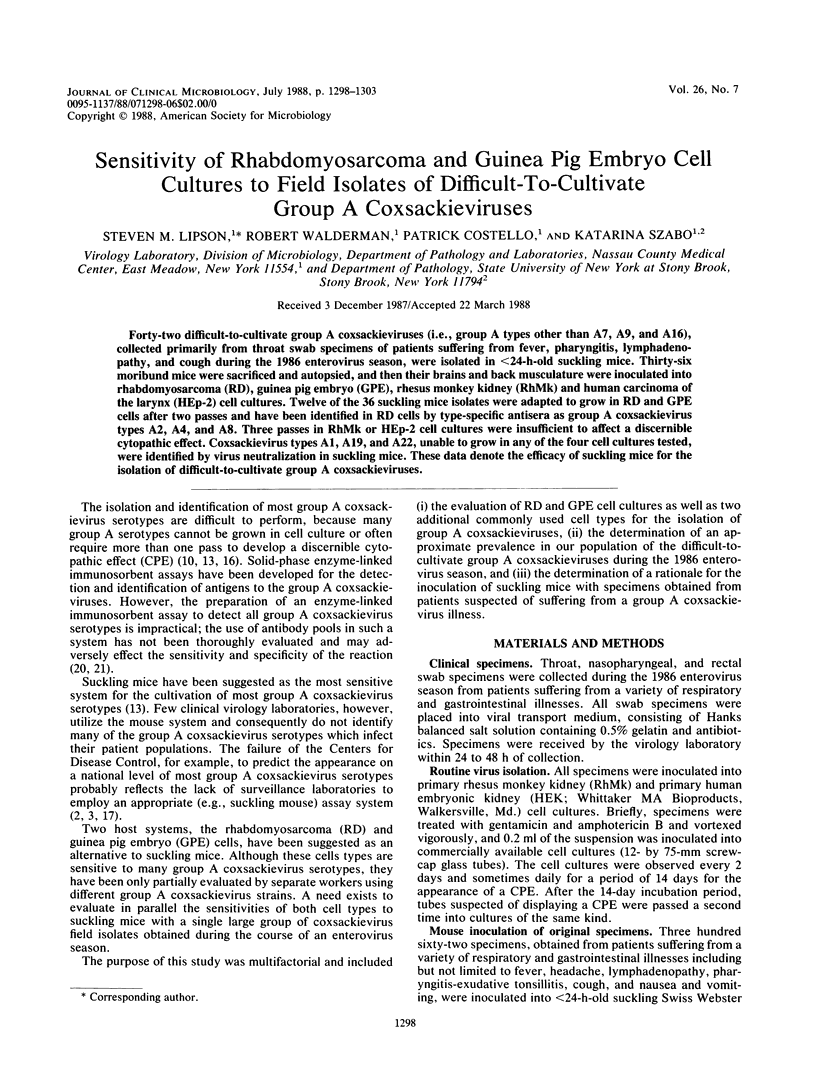
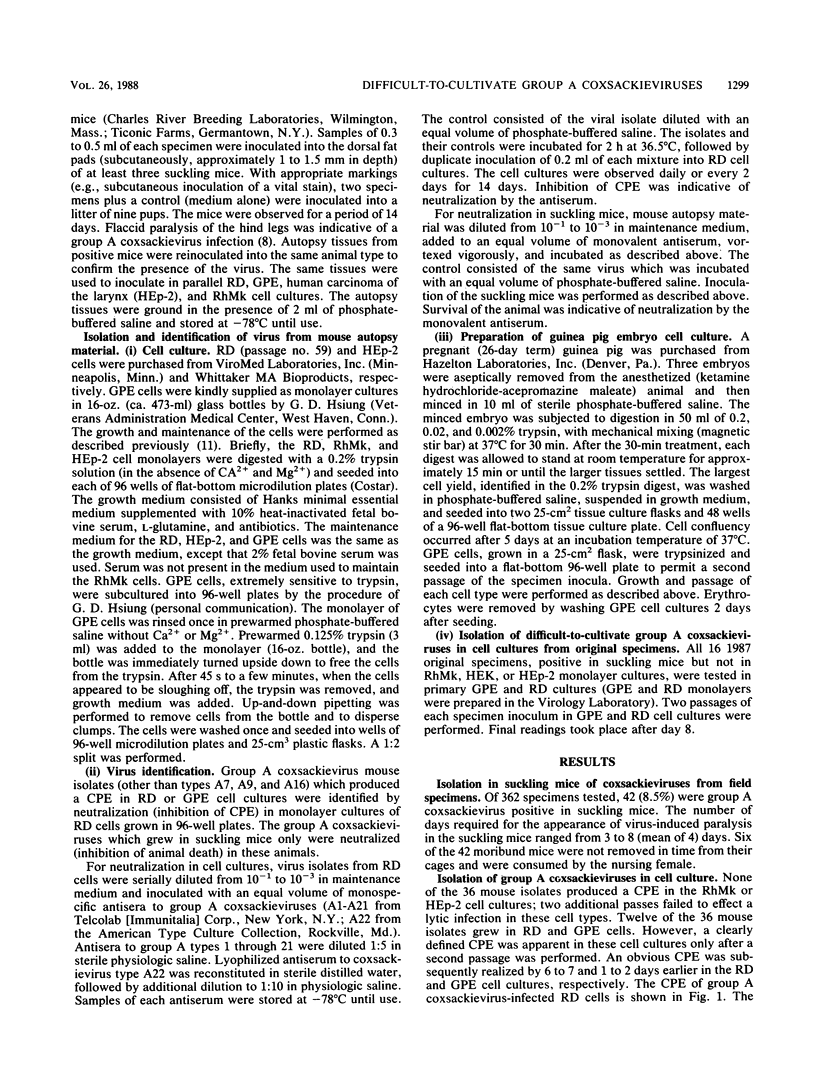
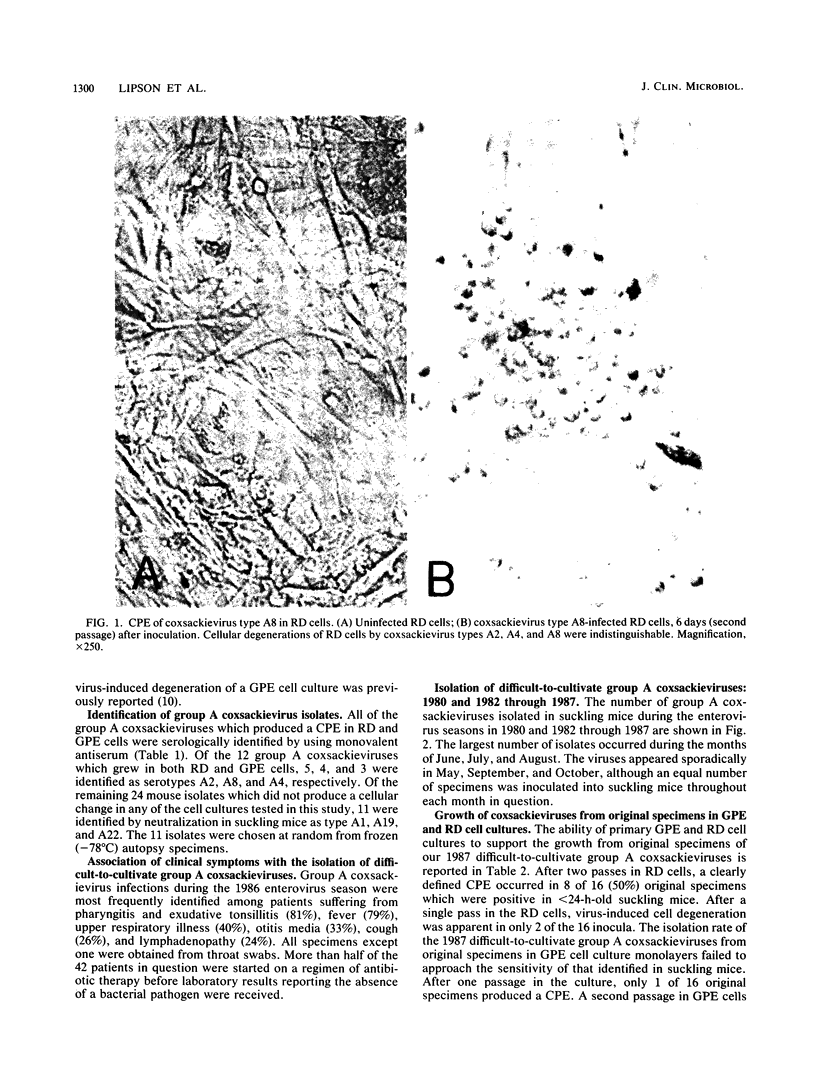
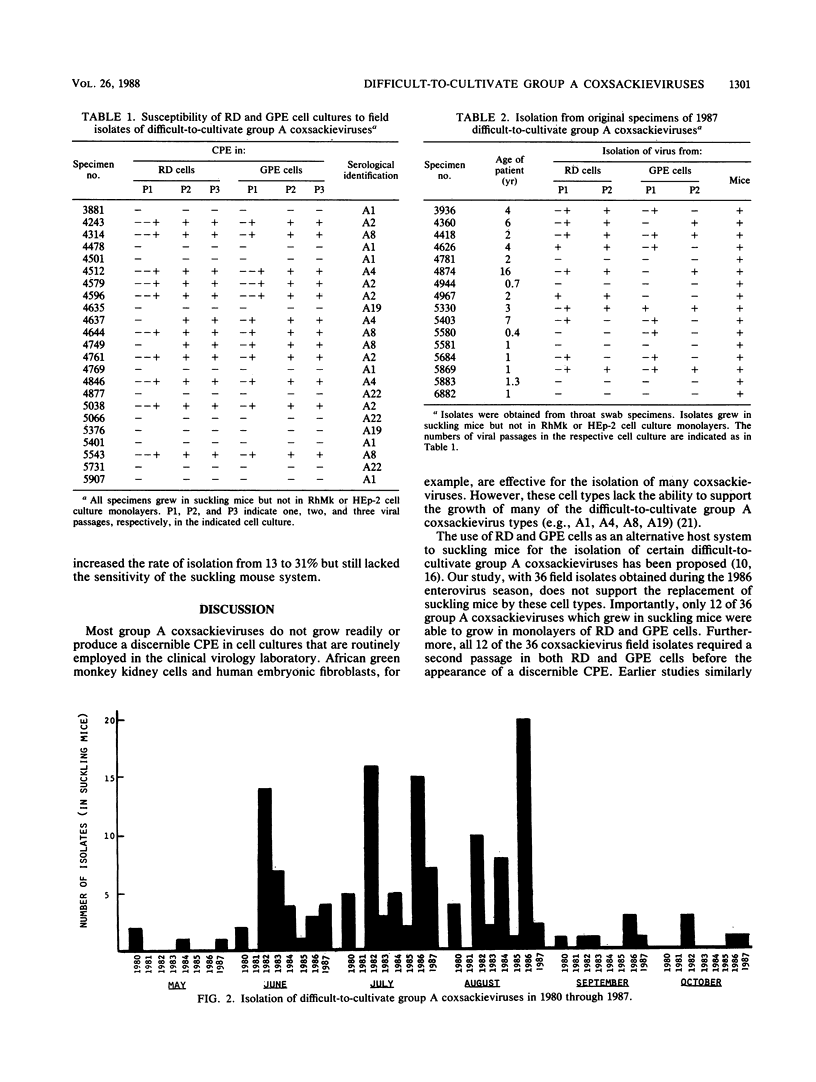
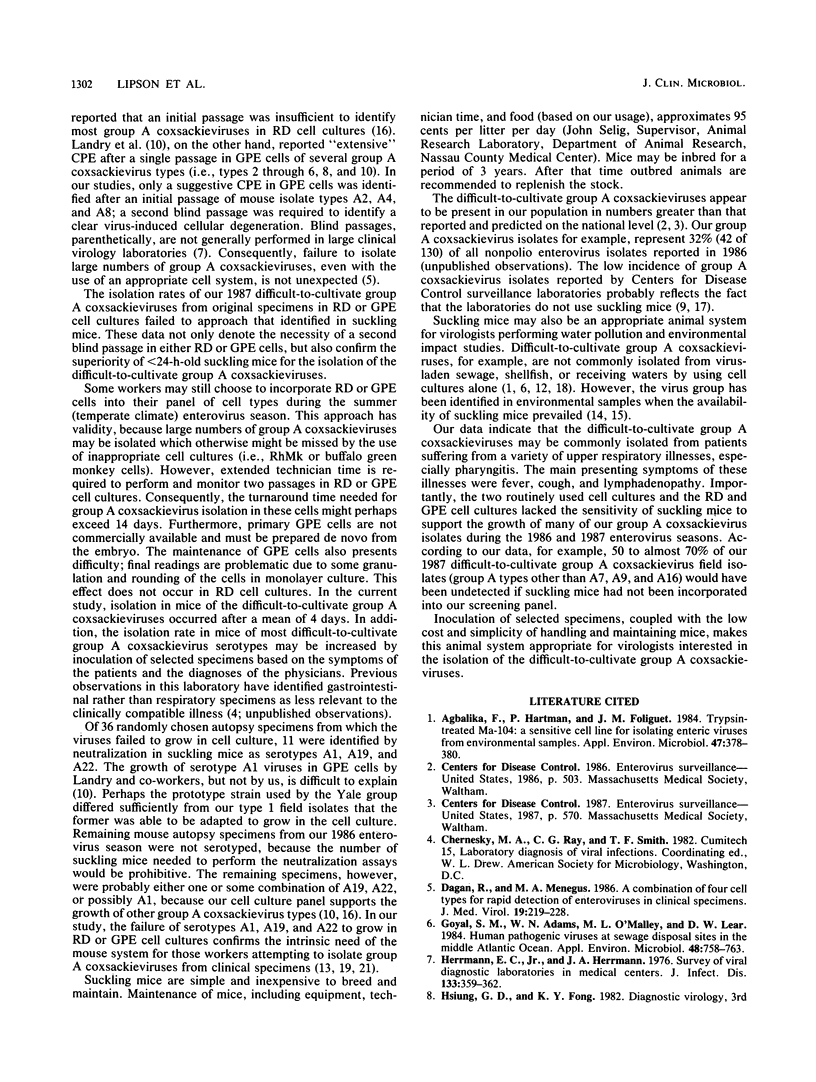
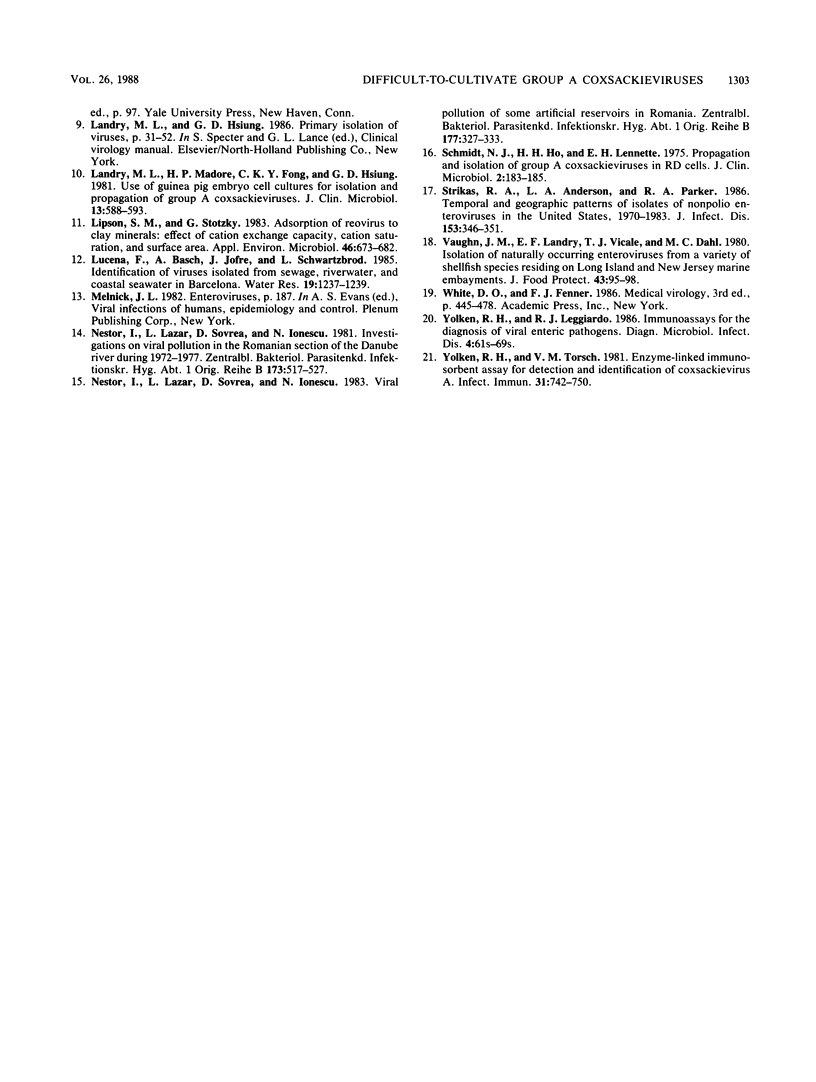
Images in this article
Selected References
These references are in PubMed. This may not be the complete list of references from this article.
- Agbalika F., Hartemann P., Foliguet J. M. Trypsin-treated Ma-104: a sensitive cell line for isolating enteric viruses from environmental samples. Appl Environ Microbiol. 1984 Feb;47(2):378–380. doi: 10.1128/aem.47.2.378-380.1984. [DOI] [PMC free article] [PubMed] [Google Scholar]
- Dagan R., Menegus M. A. A combination of four cell types for rapid detection of enteroviruses in clinical specimens. J Med Virol. 1986 Jul;19(3):219–228. doi: 10.1002/jmv.1890190304. [DOI] [PubMed] [Google Scholar]
- Goyal S. M., Adams W. N., O'Malley M. L., Lear D. W. Human pathogenic viruses at sewage sludge disposal sites in the Middle Atlantic region. Appl Environ Microbiol. 1984 Oct;48(4):758–763. doi: 10.1128/aem.48.4.758-763.1984. [DOI] [PMC free article] [PubMed] [Google Scholar]
- Herrmann E. C., Jr, Herrmann J. A. Survey of viral diagnostic laboratories in medical centers. J Infect Dis. 1976 Mar;133(3):359–362. doi: 10.1093/infdis/133.3.359. [DOI] [PubMed] [Google Scholar]
- Landry M. L., Madore H. P., Fong C. K., Hsiung G. D. Use of guinea pig embryo cell cultures for isolation and propagation of group A coxsackieviruses. J Clin Microbiol. 1981 Mar;13(3):588–593. doi: 10.1128/jcm.13.3.588-593.1981. [DOI] [PMC free article] [PubMed] [Google Scholar]
- Lipson S. M., Stotzky G. Adsorption of reovirus to clay minerals: effects of cation-exchange capacity, cation saturation, and surface area. Appl Environ Microbiol. 1983 Sep;46(3):673–682. doi: 10.1128/aem.46.3.673-682.1983. [DOI] [PMC free article] [PubMed] [Google Scholar]
- Nestor I., Lazar L., Sovrea D., Ionescu N. Investigations on viral pollution in the Romanian section of the Danube river during 1972-1977 period. Zentralbl Bakteriol Mikrobiol Hyg B. 1981 Sep;173(6):517–527. [PubMed] [Google Scholar]
- Nestor I., Lazar L., Sovrea D., Ionescu N. Viral pollution of some artificial reservoirs in Romania. Zentralbl Bakteriol Mikrobiol Hyg B. 1983 Apr;177(3-4):327–333. [PubMed] [Google Scholar]
- Schmidt N. J., Ho H. H., Lennette E. H. Propagation and isolation of group A coxsackieviruses in RD cells. J Clin Microbiol. 1975 Sep;2(3):183–185. doi: 10.1128/jcm.2.3.183-185.1975. [DOI] [PMC free article] [PubMed] [Google Scholar]
- Strikas R. A., Anderson L. J., Parker R. A. Temporal and geographic patterns of isolates of nonpolio enterovirus in the United States, 1970-1983. J Infect Dis. 1986 Feb;153(2):346–351. doi: 10.1093/infdis/153.2.346. [DOI] [PubMed] [Google Scholar]
- Yolken R. H., Leggiadro R. J. Immunoassays for the diagnosis of viral enteric pathogens. Diagn Microbiol Infect Dis. 1986 Mar;4(3 Suppl):61S–69S. doi: 10.1016/s0732-8893(86)80043-8. [DOI] [PubMed] [Google Scholar]
- Yolken R. H., Torsch V. M. Enzyme-linked immunosorbent assay for detection and identification of coxsackieviruses A. Infect Immun. 1981 Feb;31(2):742–750. doi: 10.1128/iai.31.2.742-750.1981. [DOI] [PMC free article] [PubMed] [Google Scholar]



